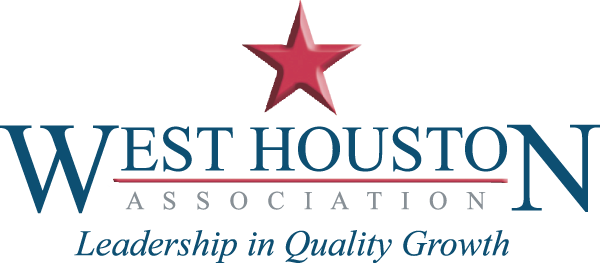Municipal Utility Districts (MUDs) are purpose-built for water, wastewater, and drainage—and, with appropriate authorization, parks, trails, and certain roadway and flood-control elements. That core mission aligns naturally with “sustainability” and “resiliency” in the Texas context: reliable drinking water, efficient treatment, resilient drainage, reduced lifecycle costs, and amenities that keep heat down and families outside and healthy. Crucially, MUDs pair that mission with robust financing authority. Under the Texas Water Code (general provisions in Chapter 49 and MUD-specific provisions in Chapter 54), districts may levy ad valorem taxes, charge user rates and fees, and issue tax-exempt bonds for public infrastructure. That toolbox lets a MUD hard-wire conservation and resilience into the capital plan from day one.
What counts as “sustainable infrastructure” for a MUD? Think beyond solar panels. For potable water systems: advanced metering infrastructure (AMI) to detect leaks, smart valves, non-revenue water reduction programs, surface-water treatment, energy efficiency, etc. For wastewater: onsite solar to stabilize power costs at plants, purple-pipe non-potable reuse for irrigation or industrial users, and more. For drainage: low-impact development (LID) features—bioswales, permeable pavement, rain gardens—as complements to dual purpose regional detention; channel restoration that mimics natural systems; and pump stations elevated and hardened for flood events. In parks and open space: shade trees and native landscaping to cut irrigation demand, trail connectivity to reduce short vehicle trips, and community micro-cooling strategies (pavilions, splash pads) that mitigate heat risk.
How do MUDs pay for the upfront costs of these capital facilities? Mainly with traditional voted tax bonds. If a project fits within the district’s authorized purposes and is sized for public use, the MUD can include it in an engineer’s report and a bond application to the Texas Commission on Environmental Quality (TCEQ). The tax base supports debt service, and—because many sustainability features reduce O&M—the MUD’s pro forma can justify modest upfront premiums with lifecycle savings. This process is made more efficient with developer reimbursements: the MUD can enter reimbursement agreements so early green features—like LID streetscapes or reclaimed-water mains—get installed during land development and reimbursed from future bond proceeds once a tax base materializes.
MUDs can also tap external funding. The Texas Water Development Board administers the Drinking Water and Clean Water State Revolving Funds—low-cost loans that increasingly reward water-loss control, energy efficiency, and reuse. FEMA’s BRIC and flood-mitigation programs were previous options to help pay for drainage and buy-down local shares, particularly for regional detention or channel improvements, and new programs may replace these in the future. Local utility rebates (for high-efficiency motors, VFDs, or demand response at plants) can provide additional revenues. In 2023, Texas voters approved the Texas Water Fund, which TWDB uses to accelerate high-priority water projects; districts should watch that rulemaking and funding pipeline for opportunities. Grants rarely carry a project alone, but they can turn a “nice to have” sustainability upgrade into a budget-neutral line item.
Governance and policy drive results. The board can adopt a sustainability policy that (1) sets water-loss targets (e.g., <10% within five years), (2) requires AMI on new meters, (3) prefers native/drought-tolerant landscaping on district property, (4) scores capital projects for lifecycle cost and resilience, and (5) integrates floodplain and extreme-weather risk into design criteria. Tie the CIP to that policy, and direct the engineer to present at least one “green alternative” for each major project with a lifecycle analysis. On the operations side, energy-savings performance contracts under Texas law allow a MUD to finance efficiency upgrades from guaranteed savings—practical for plant blowers, UV systems, and HVAC at facilities—without front-loading tax dollars.
Coordination matters. If the project is inside a city’s jurisdiction, align with the city’s drainage and water master plans so the MUD’s LID and detention count toward regional objectives (and avoid duplicative infrastructure). When a flood-control district or county is present, structure interlocal agreements so the MUD’s detention and channel improvements are “right-sized” and eligible for outside dollars.
A common concern is that sustainability adds cost. Sometimes it does—AMI and purple pipe are the classic examples. But in Texas, water is a major pinch point, and resilience is no longer theoretical. Leak detection, pressure management, and drought-tolerant landscaping have short paybacks; purple pipe decreases dependence on water wells and saves money; LID can reduce or resize hard infrastructure; energy efficiency at plants dampens exposure to volatile power prices; and elevating or hardening assets cuts the tail risk that devastates budgets after a storm. When you spread these costs across a tax base and back them with long-term debt, the per-household impact is typically measured in single-digit dollars per month, often offset by lower bills from reduced consumption.
Here are three practical ways in which a MUD can implement a sustainable infrastructure policy: (1) Start with metering and water-loss control. While unglamorous, this policy is highly bankable and results in cost savings and increased water resilience;. (2) Build reclaimed-water stubs during development even if the plant isn’t ready; the marginal cost is low now and painful later; and. (3) Treat shade and trees as infrastructure. Native canopy over trails, detention side slopes, and parks reduces heat stress, lowers irrigation needs, and makes the district more livable—exactly the sort of amenity residents will pay for and voters will support at the next bond election.
Ultimately, Texas MUDs already possess the legal authority, fiscal tools, and institutional posture to be vehicles for sustainable infrastructure. By intentionally weaving conservation, resilience, and lifecycle value into planning, finance, and operations—and by telling that story clearly to voters and investors—MUDs can deliver greener systems without sacrificing reliability or affordability.

This piece was written by Harry Holmes Thompson, Partner at ABHR, Chair of WHA’s Sustainable Infrastructure Committee
